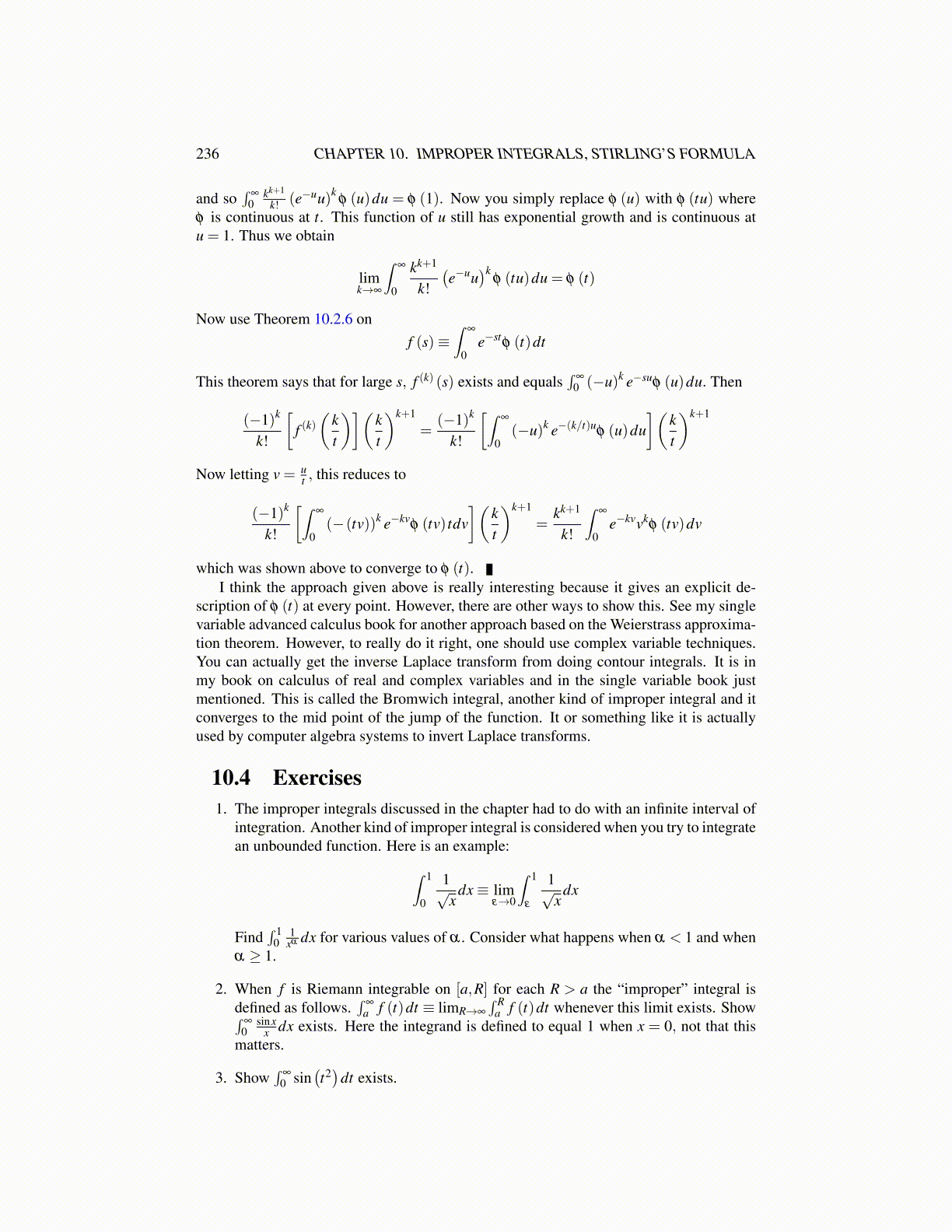
236 CHAPTER 10. IMPROPER INTEGRALS, STIRLING’S FORMULA
and so∫
∞
0kk+1
k! (e−uu)kφ (u)du = φ (1). Now you simply replace φ (u) with φ (tu) where
φ is continuous at t. This function of u still has exponential growth and is continuous atu = 1. Thus we obtain
limk→∞
∫∞
0
kk+1
k!(e−uu
)kφ (tu)du = φ (t)
Now use Theorem 10.2.6 onf (s)≡
∫∞
0e−st
φ (t)dt
This theorem says that for large s, f (k) (s) exists and equals∫
∞
0 (−u)k e−suφ (u)du. Then
(−1)k
k!
[f (k)(
kt
)](kt
)k+1
=(−1)k
k!
[∫∞
0(−u)k e−(k/t)u
φ (u)du](
kt
)k+1
Now letting v = ut , this reduces to
(−1)k
k!
[∫∞
0(−(tv))k e−kv
φ (tv) tdv](
kt
)k+1
=kk+1
k!
∫∞
0e−kvvk
φ (tv)dv
which was shown above to converge to φ (t).I think the approach given above is really interesting because it gives an explicit de-
scription of φ (t) at every point. However, there are other ways to show this. See my singlevariable advanced calculus book for another approach based on the Weierstrass approxima-tion theorem. However, to really do it right, one should use complex variable techniques.You can actually get the inverse Laplace transform from doing contour integrals. It is inmy book on calculus of real and complex variables and in the single variable book justmentioned. This is called the Bromwich integral, another kind of improper integral and itconverges to the mid point of the jump of the function. It or something like it is actuallyused by computer algebra systems to invert Laplace transforms.
10.4 Exercises1. The improper integrals discussed in the chapter had to do with an infinite interval of
integration. Another kind of improper integral is considered when you try to integratean unbounded function. Here is an example:∫ 1
0
1√x
dx ≡ limε→0
∫ 1
ε
1√x
dx
Find∫ 1
01
xα dx for various values of α . Consider what happens when α < 1 and whenα ≥ 1.
2. When f is Riemann integrable on [a,R] for each R > a the “improper” integral isdefined as follows.
∫∞
a f (t)dt ≡ limR→∞
∫ Ra f (t)dt whenever this limit exists. Show∫
∞
0sinx
x dx exists. Here the integrand is defined to equal 1 when x = 0, not that thismatters.
3. Show∫
∞
0 sin(t2)
dt exists.